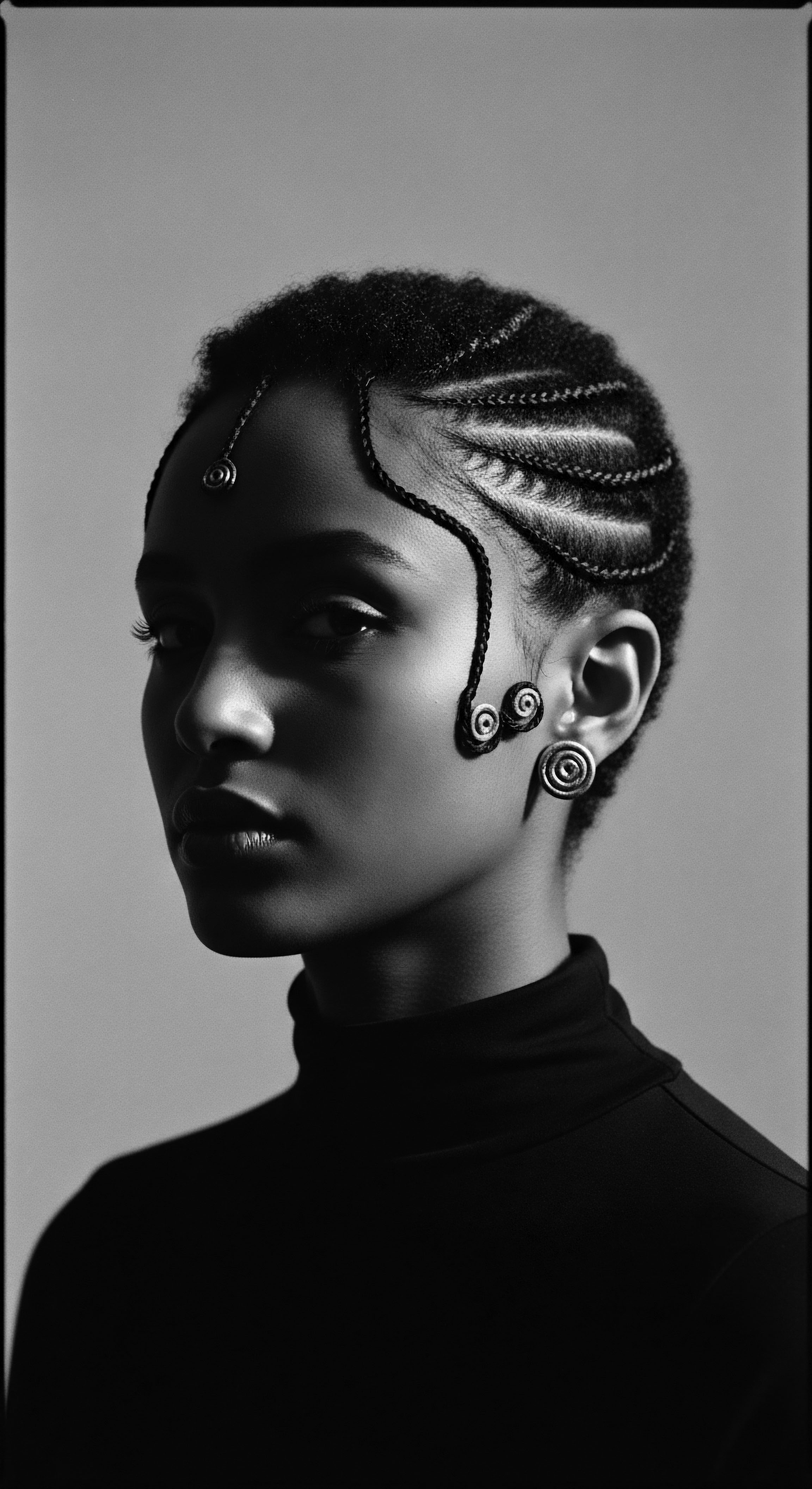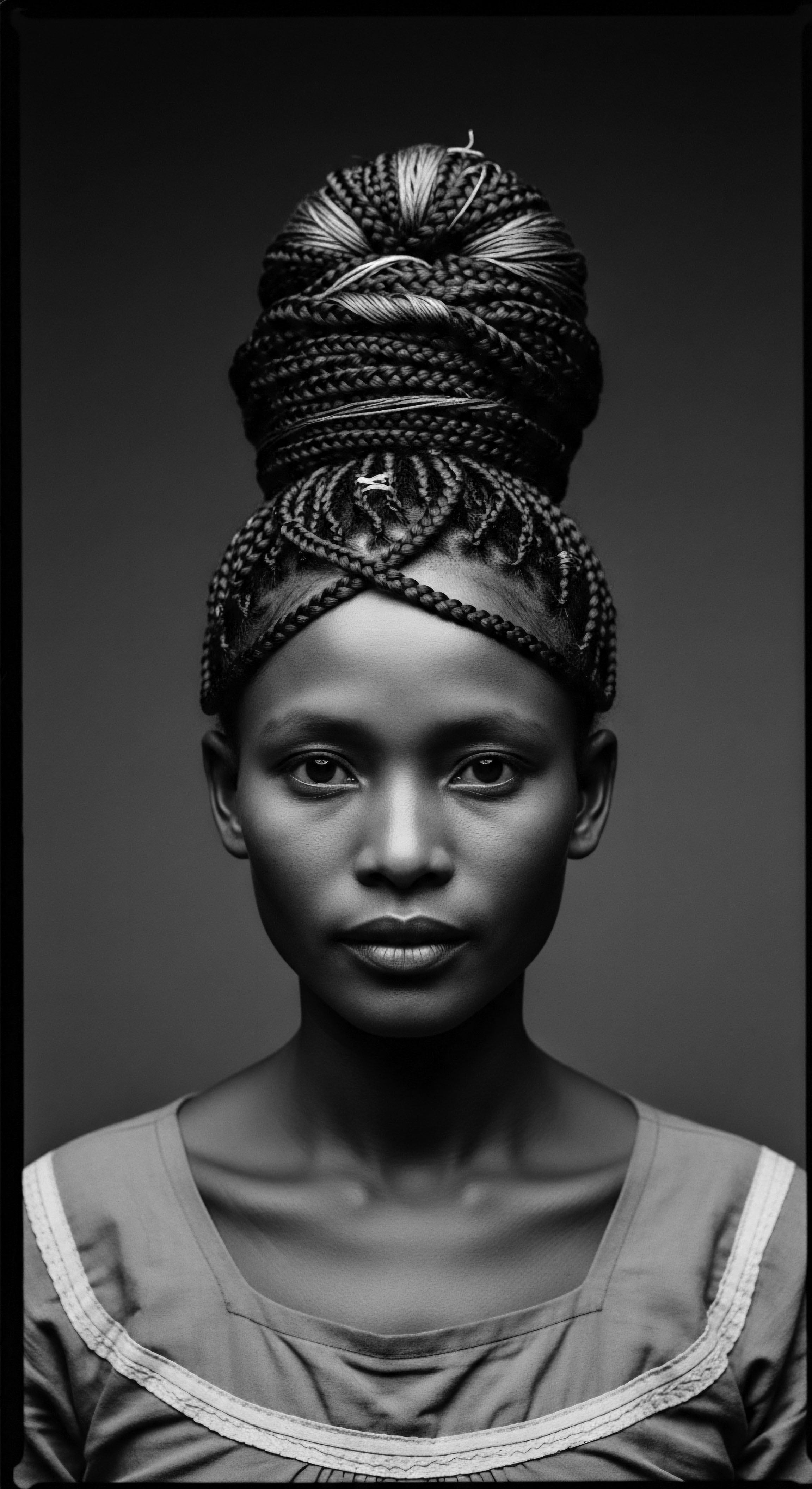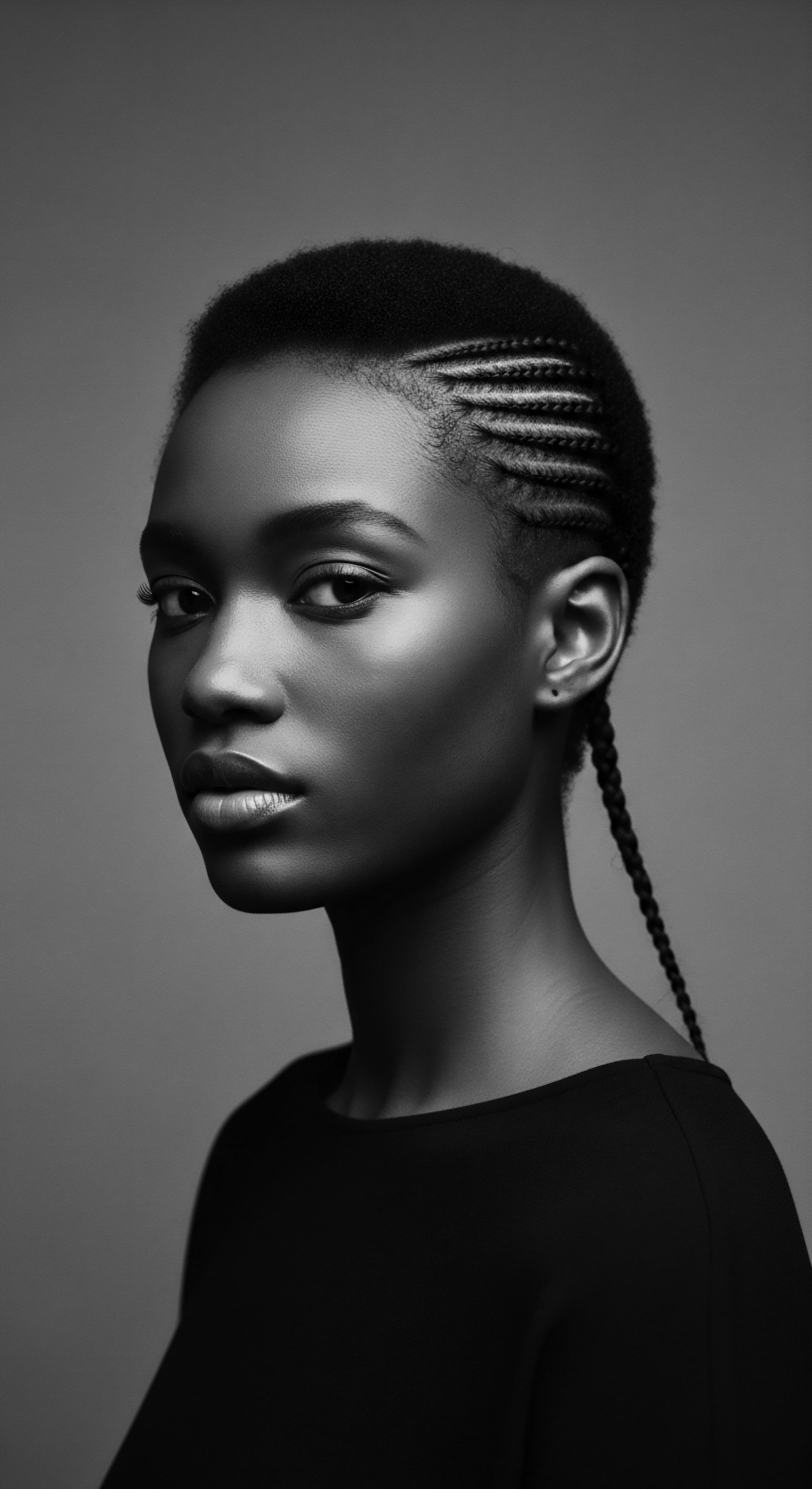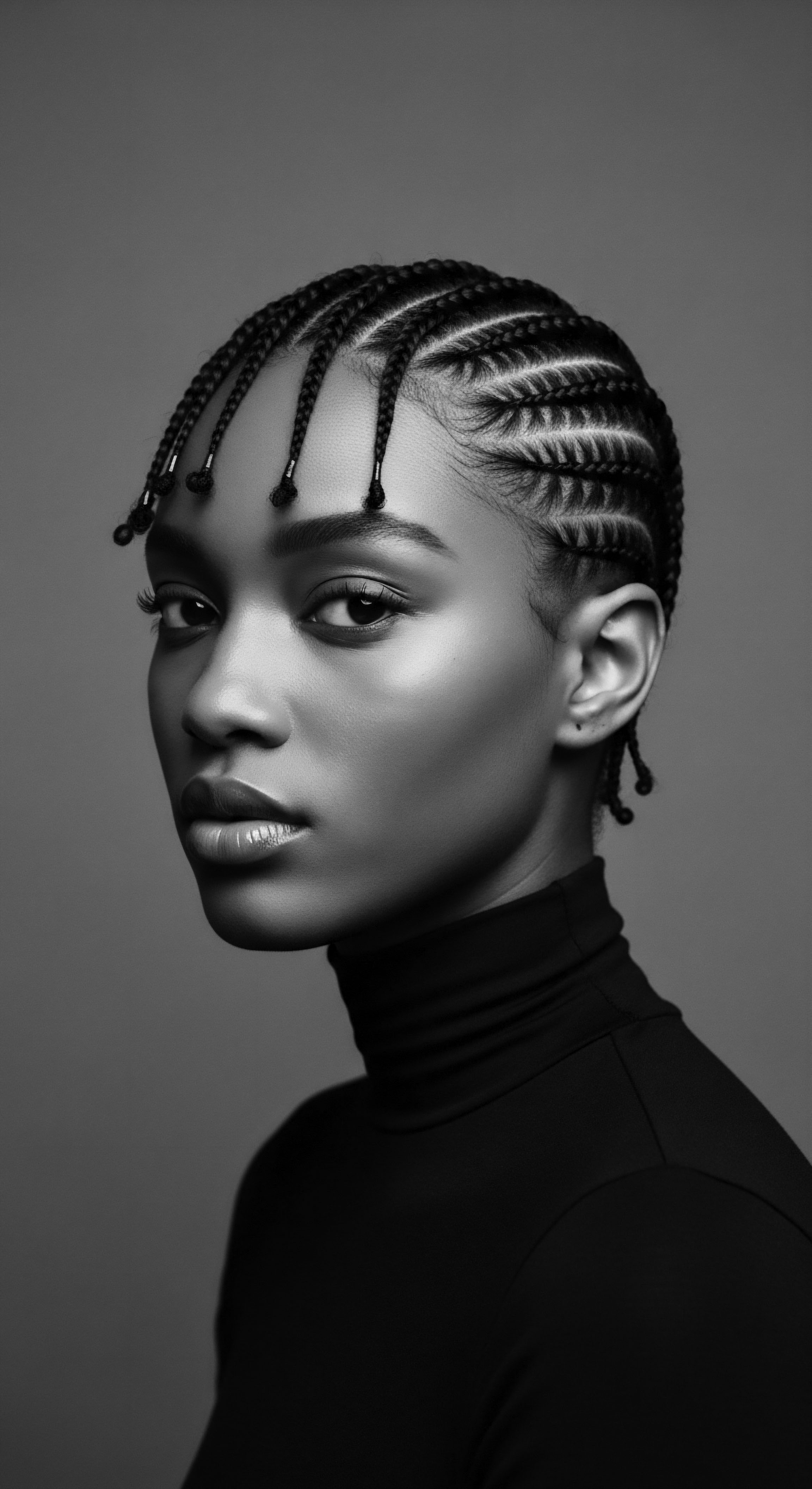
Roots
To truly comprehend the profound ingenuity that allowed enslaved Africans to use their hair for survival and communication, we must first honor the deep roots of textured hair heritage. This journey begins not in the crucible of forced displacement, but in the vibrant, diverse societies of pre-colonial Africa. Here, hair was far more than mere biological filament; it represented a living chronicle of identity, social standing, age, marital status, and even spiritual connection. The very coils and curves of Afro-textured hair, inherently protective against the intense sun, were revered, adorned, and styled with a sacred attentiveness.
The arrival of the transatlantic slave trade brought with it a deliberate assault on this heritage. One of the first, most brutal acts inflicted upon newly captured Africans was often the shaving of their heads. This act, calculated to strip identity and sever ancestral bonds, was a profound psychological weapon. Yet, even in the face of such dehumanization, the inherent resilience of African peoples, and the very nature of their hair, found ways to persist, to adapt, and to carry forward a silent, yet powerful, narrative.
The intricate coils of textured hair, once symbols of identity in ancestral lands, transformed into a secret canvas of defiance for those held captive.

The Language of Hair Texture
Afro-textured hair, with its unique tightly coiled strands and curved follicles, evolved over millennia as an adaptation to equatorial climates, offering natural protection against ultraviolet radiation. This inherent physical characteristic, often termed ‘kinky’ or ‘coily,’ possesses a remarkable versatility. In West African societies, where the majority of enslaved individuals originated, hairstyles communicated complex social grammars. A person’s coiffure might tell tales of their village, their family lineage, or their role within the community.
The very malleability of textured hair allowed for sculptural forms that could convey information without uttering a sound. Johnson and Bankhead (2014) point out that the texture and pliability of Black people’s hair allows for the shaping of messages and the display of social status.

Foundations in Pre-Colonial Styling
Before the horrors of forced migration, hair care in Africa was a communal, time-consuming ritual, often spanning hours or even days. This was not merely about aesthetic appeal; it was a deeply social practice, a moment of connection and shared wisdom. Ingredients derived from local flora, rich in nutrients, sustained the hair’s vitality.
The styles themselves, from the geometric patterns of Cornrows to the sculptural forms of Bantu knots, held specific cultural and ceremonial weight. These were not arbitrary adornments; they were living archives, passed down through generations, embodying collective history and belonging.
The resilience of this heritage meant that even when access to traditional tools and ingredients was severed, the knowledge, the muscle memory of styling, and the understanding of hair’s communicative power persisted. This deeply rooted connection to hair as a cultural repository laid the groundwork for its subsequent, covert uses in environments of captivity.

Ritual
The brutal reality of enslavement sought to erase the cultural practices of captured Africans, yet within the forced confines of plantations, traditional hair rituals adapted, transforming into acts of quiet rebellion and clandestine communication. The very act of caring for one’s hair, however rudimentary the tools or products available, became a way to maintain a connection to a lost homeland and to foster community bonds. These rituals were not just about appearance; they became a vital aspect of psychological and physical survival. Enslaved women, stripped of so much, clung to the memory of their hair traditions, finding ingenious ways to practice them in secret.
Hair, meticulously styled by enslaved hands, became a silent testament to enduring heritage and a covert means of exchanging vital information.

How Did Hair Become a Vessel for Hidden Information?
The most striking application of hair as a tool for communication and survival manifested in the use of braided styles, particularly cornrows. These styles, already culturally significant in Africa, were subtly re-purposed by enslaved individuals. The patterns of the braids, the direction they took on the scalp, and even the objects hidden within them, became a sophisticated system of coded messages. This was a direct response to the dire circumstances of captivity, where overt communication of escape plans meant certain death.
- Maps ❉ Braided patterns on the scalp could signify escape routes, paths through treacherous terrain, or the layout of plantations. Historical accounts, particularly from South America, cite instances where specific cornrow designs acted as navigational guides.
- Meeting Times ❉ The number of braids or the intricacy of a particular style could indicate a rendezvous point or a planned escape time. This covert signaling allowed individuals who might not share a common spoken language to coordinate their efforts.
- Hidden Items ❉ Seeds, gold nuggets, or small tools were concealed within tightly woven braids, offering sustenance and necessary implements for those attempting to escape to freedom. This practical use demonstrates the multifaceted nature of hair as a tool for survival.

The Case of Benkos Biohó and Palenque
A powerful historical account that brings this phenomenon to life centers on Benkos Biohó, a royal captured from the Bissagos Islands, who escaped enslavement in Colombia during the early 17th century. Biohó established San Basilio de Palenque, the first free village in the Americas for people of African descent. As part of his resistance network, Biohó devised a system where enslaved women would create “maps” and deliver messages through their cornrows. Ziomara Asprilla Garcia, an Afro-Colombian hair braider, describes how a style called “departs” involved thick, tight braids tied into buns on top, signaling plans to escape.
Another style featured curved braids, representing escape roads. This unique system highlights the profound ingenuity and the collective spirit of resistance that thrived even under extreme oppression. The persistence of these oral histories in Afro-Colombian communities underscores the significance of hair as a living archive of liberation.
| Pre-Colonial Africa Hair styles denoted social standing, age, tribal affiliation, and spiritual connection. |
| During Enslavement Braids conveyed hidden messages and maps for escape. |
| Post-Emancipation Resilience Reclamation of natural hair became a symbol of Black pride and activism. |
| Pre-Colonial Africa Grooming rituals were communal, fostering social bonds and shared cultural knowledge. |
| During Enslavement Hair concealed small items like seeds for survival during escape. |
| Post-Emancipation Resilience Headwraps transformed from symbols of subjugation into statements of cultural expression. |
| Pre-Colonial Africa Hair was meticulously cared for using natural oils and traditional tools. |
| During Enslavement Improvised materials were used for hair care, adapting to harsh conditions. |
| Post-Emancipation Resilience The natural hair movement validated ancestral textures and care philosophies. |
| Pre-Colonial Africa Hair’s journey across these periods reflects the enduring strength and adaptability of textured hair heritage. |

Resistance in Adornment
Beyond direct communication, the mere act of styling hair became a subtle yet powerful form of resistance. The forced covering of Black women’s hair with headwraps, enforced by laws such as the Tignon Law in Louisiana, was intended to diminish their status and beauty. Yet, enslaved and free Black women transformed these very mandates into expressions of defiance.
They styled their headwraps with elaborate designs, using vibrant fabrics and decorative elements, turning an instrument of subjugation into a statement of artistry and pride, thereby reclaiming agency over their appearance. This demonstrates a powerful continuity of ancestral practices, even when stripped of their original context, reinterpreted through the lens of survival.

Relay
The saga of textured hair during enslavement extends beyond mere survival and coded messages; it embodies a profound cultural relay, a continuous transmission of heritage despite deliberate attempts at its eradication. The ability of enslaved Africans to maintain elements of their hair traditions, to infuse them with new meanings, and to pass this knowledge through generations, speaks to an extraordinary resilience. This was not a passive act; it represented an active preservation of self, community, and ancestral memory in a hostile environment.
The legacy of enslaved African hair practices echoes in the natural hair movement today, a living testament to ancestral fortitude.

Did Hair Practices Shape Collective Identity in Bondage?
Indeed, hair practices played a vital role in shaping and preserving collective identity among enslaved communities. When formally recognized forms of communication were forbidden, hair became a visual language, a shared understanding. The subtle cues in a hairstyle could foster solidarity, convey warnings, or simply serve as a reminder of a shared past and a collective struggle. This shared visual language was an integral part of what Stella Dadzie (2021) describes as enslaved women’s “subversive adaptation of the values and cultures they smuggled with them naked from different parts of Africa,” a process that ensured their collective sanity and undermined the system of slavery.
The imposition of Eurocentric beauty standards, which deemed tightly coiled hair as “bad hair” or “unprofessional,” was a tool of psychological control. Yet, resistance to this imposed aesthetic, even in its most subtle forms, validated the inherent beauty of African hair. The adaptation of traditional hair care practices, even with severely limited resources like axle grease or eel skin as straightening agents, was a testament to the enduring desire to maintain a semblance of self-care and cultural continuity.
- Oral Transmission of Knowledge ❉ Hair braiding sessions often became moments for storytelling and the sharing of ancestral wisdom, including medicinal uses of plants and traditional care methods. This oral tradition ensured the continuity of cultural practices related to hair.
- Symbolism of Adornment ❉ Despite the harsh realities, some enslaved individuals, particularly those with domestic duties, were sometimes able to adorn their hair with natural materials, echoing the elaborate styles of their homelands. These small acts of adornment were significant in affirming identity.
- Community and Kinship ❉ The communal act of braiding hair, a practice deeply rooted in African societies, continued in slave communities, strengthening bonds between individuals and creating a sense of family where blood ties were often forcibly severed.

How Did Hair Become a Political Statement of Self?
Hair transcended its role as a mere physical attribute to become a powerful political statement. In an environment designed to strip individuality, controlling one’s hair, however minimally, was an assertion of selfhood. The forced shaving of heads was a calculated act of dehumanization, aimed at erasing identity.
In response, the very growth of natural, textured hair, and its styling, became a quiet defiance. This foundational resistance laid the groundwork for later movements, such as the Black Power movement of the 1960s and 70s, where the Afro became a powerful symbol of Black pride and rebellion against Eurocentric beauty norms.
The concept of “good hair” versus “bad hair” was a construct of slavery, designed to create divisions among enslaved people based on proximity to European features. Those with straighter textures were often given preferential treatment, creating an internalized hierarchy. This systemic devaluation of Afro-textured hair underscores the bravery of those who maintained their natural styles, even in secret, thereby affirming their ancestral heritage in the face of immense pressure. The reclamation of textured hair today directly connects to this historical struggle for self-acceptance and cultural affirmation.
The influence of these survival and communication strategies, born out of necessity, continues to reverberate. The understanding that hair can hold such profound meaning—as a tool for physical safety, a vehicle for coded messages, and a banner of enduring cultural identity—remains a cornerstone of textured hair heritage. It is a testament to the remarkable human spirit that, even in the darkest of times, creativity and connection found expression in the very fibers of the scalp.

Reflection
The story of how enslaved Africans used hair for survival and communication is not merely a chapter in history; it is a living, breathing archive etched into the very helix of textured hair heritage. This journey through time reveals the extraordinary depth of human ingenuity, the enduring power of cultural memory, and the profound wisdom that can arise from unimaginable adversity. Hair, once a vibrant marker of status and tribe in ancestral lands, transformed into a secret language, a hidden map, a vessel for precious seeds, and a quiet shield against erasure in the brutal landscapes of the Americas.
Each coil, each braid, each meticulously arranged style carries echoes of whispered plans, silent acts of defiance, and the unwavering resolve to remain connected to a past forcibly severed. The resilience of textured hair itself, an evolutionary marvel, mirrored the resilience of the people who wore it. This heritage reminds us that true beauty lies not in conformity, but in authenticity and the strength to carry forward ancestral narratives. The legacy of these practices continues to inspire, inviting us to look upon textured hair not simply as a biological trait, but as a sacred vessel of history, a symbol of freedom, and a vibrant connection to the soulful wisdom of generations past.

References
- Byrd, Ayana D, and Lori L Tharps. Hair Story ❉ Untangling the Roots of Black Hair in America. St. Martin’s Press, 2001.
- Caffrey, Cait. “Afro-textured hair.” EBSCO Research Starters, 2023.
- Chico, Beverly. Hats and Headwear Around the World ❉ A Cultural Encyclopedia. ABC-CLIO, 2013.
- Dabiri, Emma. Twisted ❉ The Tangled History of Black Hair Culture. Harper Perennial, 2020.
- Dadzie, Stella. A Kick in the Belly ❉ Women, Slavery & Resistance. Verso Books, 2021.
- Johnson, T A, and T Bankhead. “Hair it is ❉ Examining the Experiences of Black Women with Natural Hair.” Open Journal of Social Sciences, vol. 2, pp. 86-100, Jan. 2014.
- Loussouarn, G. “African hair growth parameters.” British Journal of Dermatology, vol. 145, issue 2, pp. 294-297, Dec. 2001.
- Quampah, Bernice, et al. “Cornrow ❉ A Medium for Communicating Escape Strategies during the Transatlantic Slave Trade Era ❉ Evidences from Elmina Castle and Centre for National Culture in Kumasi.” International Journal of Social Sciences ❉ Current and Future Research Trends, 18(1), pp. 127–143, May 2023.
- Omotoso, Sharon Adetutu. “Gender and Hair Politics ❉ An African Philosophical Analysis.” Journal of Pan African Studies, 2018.
- Thompson, S. “The Journey to Becoming Natural ❉ An Examination of the Natural Hair Movement and its Impact on Black Women’s Identity and Hair Care Practices.” Theses and Dissertations, University of North Carolina at Chapel Hill, 2009.
